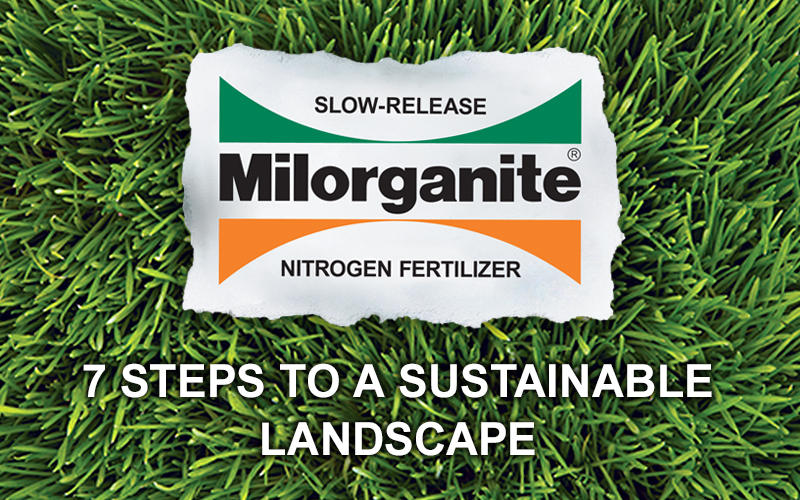Keys to Create a Sustainable Landscape
- Gardening Expert and Host of Growing a Greener World®April 14, 2018
If you’ve ever wanted to create a sustainable landscape without sacrificing the aesthetics of a lush lawn and thriving garden, you can. Maintaining your lawn and garden so that it looks great while doing so in the most environmentally responsible way is not only possible; it’s easier than you might think.
Follow these seven keys to create a thriving and beautiful garden environment while conserving and protecting resources and wildlife too.
1) Conserve and Control How You Water
The first key to a more sustainable landscape is conserving water. It’s a finite resource that has more demands for its use every day. In fact, 30-50% of our daily consumption goes for outdoor use. But it doesn’t and shouldn’t have to be that way.
Did you know more plants and lawns are distressed or die from overwatering than under watering? A better way to water in the absence of rain is deeply and not so often.
In lawns, water only as needed, not simply because your timer is set to keep it coming. The key is to supplement rainfall to provide about an inch of water each week in total. Deep infrequent watering sessions are better at building deeper roots. Consider providing supplemental irrigation to meet your goal in just one or two sessions per week such as one-inch once a week or a half-inch twice a week.
Consider getting a rain gauge to help you know how much water is getting to your lawn. Alternatively, you could use an empty tuna can (or several) placed around your watering zone. A full can represents an inch of water.
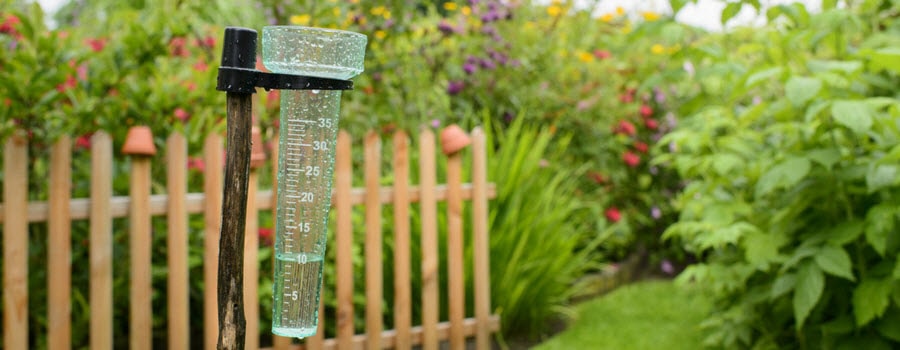
The best time to water is early in the morning, to maximize the amount of water reaching the soil surface while minimizing the time the grass stays wet. This helps roots grow deeper which increases their ability to tolerate drought. It also reduces the instances of lawn diseases. In turn, any need for lawn chemicals to fix a problem is eliminated.
For trees, shrubs and bedding plants, use soaker hoses, soaker attachments or drip irrigation to deliver water right where you need it, without excess runoff, and at a rate and volume where the roots have a chance to take it up while adequately soaking the soil around just the immediate root area.
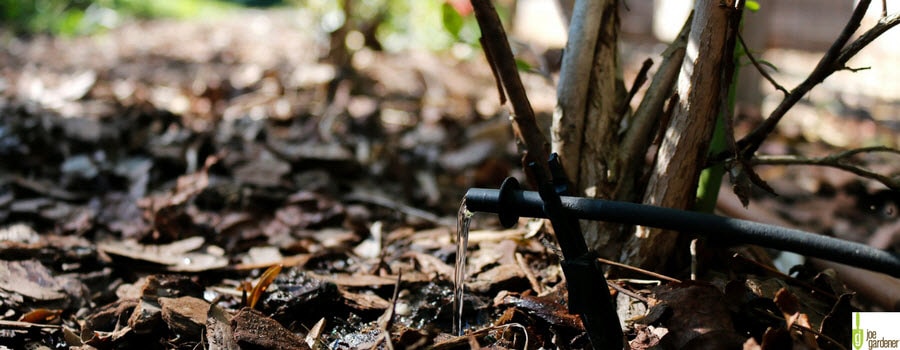
A portable timer is the key to making sure plants get just enough but not too much water. Plus, it makes it much easier on you not having to remember to go back out and turn it off.
Add mulch around all your trees and plants, to help keep moisture in the soil longer and reduce runoff.
With lawns, set your mower to cut your grass at a height that is close to the highest recommended height. Taller grass has a similar effect as mulch for helping to shade the soil surface, and reduce the impact of evaporation, thereby conserving water.
2) Eliminate or Reduce Water Runoff
Controlling water runoff is an essential step to creating a sustainable landscape. Keeping soil in place prevents sediments and chemicals from making their way into watersheds. It’s also crucial to protecting the precious topsoil on our property. Simple ways to control runoff include:
- Add organic amendments to your soil. As it breaks down, they help bind and aggregate soil particles and can reduce soil erosion loss by up to 85%.
- Add a 2” layer of mulch over all exposed soil, and especially out to the drip line of all your trees and shrubs.
- Another way to protect the soil integrity is to water slowly and gently with methods described above. That way, you’re not blasting away vital soil around your plants and roots or having it wash away.
- Ensure all overhead watering stays on target. Water landing on impervious surfaces takes with it whatever pollutants are in its path. Examples include gas, oil, pesticides, and sediment.
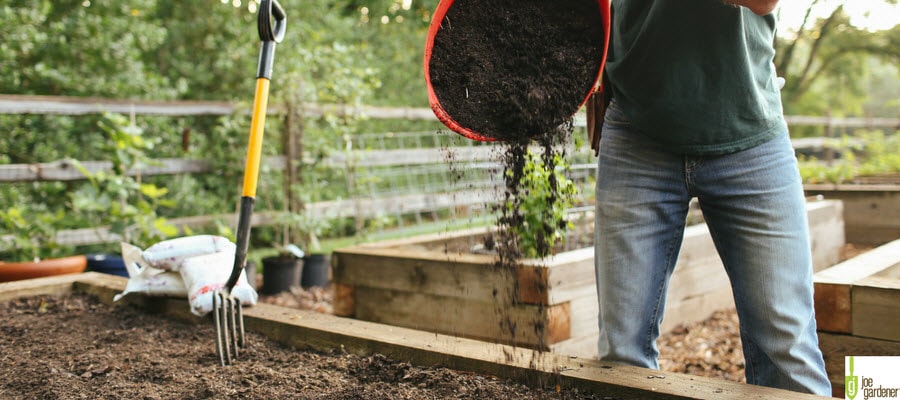
3) Improve and protect soil
An important key to a more sustainable landscape starts with the soil. A focus on improving the soil with organic material and compost creates the best possible environment for all that’s growing there. The results include:
- Less need for water, since good soil retains more water.
- Soil that’s less susceptible to runoff and erosion because healthy soil improves drainage and binds soil particles.
- Healthier plants and a better growing environment, resulting in less pests and diseases, so fewer chemicals.
4) Eliminate or Minimize Chemical Use
Eliminating or reducing the use of synthetic chemicals is an imperative step in creating a sustainable landscape and wildlife habitat. As an organic gardener, I don’t use synthetic chemicals, nor do I miss them. My landscape and gardens are lush and bountiful and I enjoy knowing the habitat I’ve created is safe for all wildlife.
Instead of salt-based synthetic fertilizers, make and use compost everywhere that you can. The organic matter and nutrients provided in compost provide the perfect balance of nutrients and microorganisms to improve soil to feed the plants, just as nature intended.
You can also supplement or seek safe alternative organic nutrient choices. Options include blood meal, bone meal, cottonseed meal, fish emulsion, seaweed extract and more
I also use Milorganite (heat-dried, nitrogen-rich non-living microbes that have digested wastewater) whenever I need to add a boost of a slow-release, non-burning nitrogen, especially to my lawn and landscape beds.
For insect pest control, get out to your garden and landscape often and early so that you can find and easily pick pests off by hand. However, be sure to positively identify them as true pests first. Only about 3% of all garden insects are true pests. The remaining 97% are either beneficial or neutral.
Lightweight materials sold at garden and farm supply stores are very effective at providing a physical barrier from many pest insects that can harm your plants. This option is especially practical for vegetable gardens.
Another option includes benign liquid or powder organic products such as insecticidal soap, biological controls including B.t (Bacillus thuringiensis) for caterpillars, and diatomaceous earth (fossilized remains of tiny, aquatic organisms that act like small shards of glass) for slugs and snails.
5) Garden to Protect Ecosystems
Gardening in harmony with nature, not against it, will create an environment in balance with all the creatures that help keep our gardeners healthy. This includes:
Planting more native plants and trees to attract beneficial insects, pollinators, and birds.
- Avoid using non-native, invasive plants. They can displace vital native plants that birds and wildlife depend on as food sources and overtake the beneficial plants we all need more of.
- Provide a water source, multiple ones in fact. You’ll be surprised just how many creatures will visit and depend on them, especially when water is scarce.
- And as you create a healthy ecosystem at home, be sure to include plants and trees that provide shelter, nesting sites, and food sources through berries, seeds, and nuts.
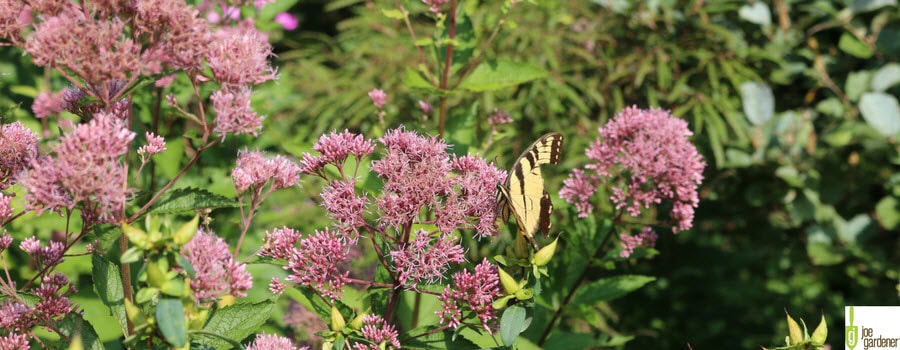
6) Landscape to Reduce Energy Consumption
Landscaping to reduce energy consumption is another key element of creating a sustainable environment. Over 50% of energy used in our homes goes towards heating and cooling. Plants and trees can play a significant role in helping reduce that consumption.
In winter, a row of evergreen trees or shrubs can provide an important windbreak. In summer, well positioned, appropriately chosen trees around your house can cut cooling costs by up to 40% according to one study.
7) Improve Air Quality with Alternative Tool Choices
Another element of making our outdoor environment greener is to reduce the amount of waste we send to the landfill and into the atmosphere. Much of what’s in a landfill comes from our lawns and gardens. The gas created in those landfills is a powerful and harmful greenhouse gas. As gardeners and weekend warriors, we can eliminate much of that waste, and use it at home to make compost.
Another way to reduce harmful emissions is to use alternatives to gasoline-powered equipment. There are many, non-polluting equipment alternatives for maintaining our lawn and garden including my favorite option when appropriate, human-powered solutions such as hand raking or mowing with a manual reel mower.
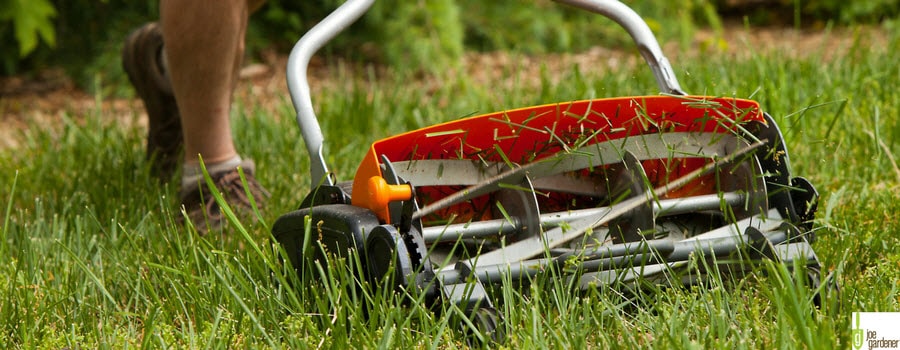
So, there you have it. Seven key elements to creating a more sustainable landscape and garden. Although it may seem overwhelming to think you should take these all on at once. But you don’t have to. Even if you start by focusing on just one area, you could expand from there as you’re able. It all adds up!

